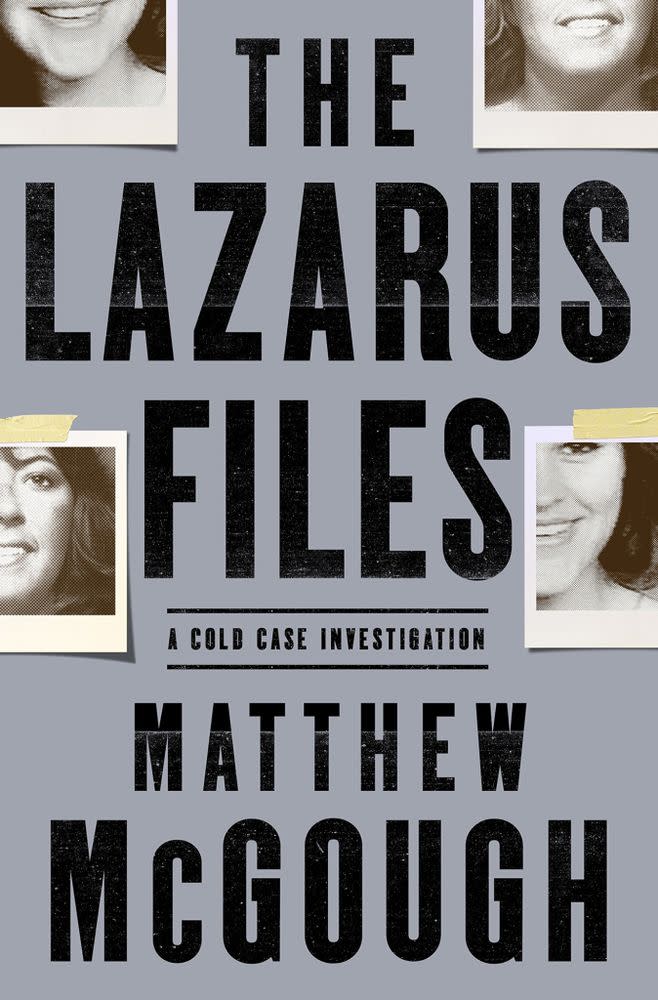An L.A. Cop Killed Her Ex’s Newlywed: How Did She Get Away With It for Decades?
Author Matthew McGough writes that his book is “not a whodunit.” After all, it was proven in court in 2012 that Los Angeles Police Department detective Stephanie Lazarus committed the 1986 murder of Sherri Rasmussen, the 29-year-old newlywed wife of a man she’d dated in college.
Rather, McGough’s book, The Lazarus Files: A Cold Case Investigation, focuses on a more troubling question: How did the killer get away with it for more than 20 years — all the while ascending the ranks of the very department charged with investigating her?
The victim’s family alleges the LAPD covered-up Lazarus’ involvement for years because she was one of their own. McGough, a former writer for Law & Order, combs through the LAPD’s chronological log of the investigation, Lazarus’ diary and other documents to lend validity to that argument. The book he has produced is as engrossing as it is disturbing, using an understated style to take the reader through the complex and sensational case with great clarity.
The initial missteps in the investigation, however, seem more innocent. McGough writes that Lazarus was “off the radar” of police early on because Rasmussen’s killing, in her gated complex in Van Nuys, appeared like a botched burglary: Her BMW was stolen, her living room was ransacked and she’d been beaten and shot three times during a struggle that left a bite mark on her arm. (A swab was taken, but at the time, DNA hadn’t been used before to solve a criminal case.)
When a nearby home was burglarized shortly after Rasmussen’s killing, police fingered two unidentified Latino men as the suspects in both crimes. No arrests were made and the case went cold.
But Rasmussen’s father was frustrated with the investigation from the beginning. Shortly after the killing, he says he relayed to cops a disturbing story his daughter had told him: Her husband’s ex-girlfriend, an LAPD cop, had aggressively confronted her at the hospital where she worked as a nurse, telling her that if she couldn’t have him, nobody could. But, he says, police didn’t follow the lead.

After the case went cold, Rasmussen’s father relayed the hospital story to the police chief in a letter. He also says he asked the case’s lead detective to look into the ex-girlfriend and LAPD cop. He alleges the lead detective told him the theory was a dead end, snapping, “You’ve been watching too much television.” For his part, the lead detective has denied the family even mentioned the jealous ex to him.

• Want to keep up with the latest crime coverage? Click here to get breaking crime news, ongoing trial coverage and details of intriguing unsolved cases in the True Crime Newsletter.
Several years later, when the use of DNA fingerprinting to solve cold cases was becoming widespread, Rasmussen’s parents say they offered to pay for private DNA analysis but they were rebuffed. Not long after, in 1993, a different LAPD detective signed out the trace evidence in the Rasmussen case. Inexplicably, it was never seen again — and the detective later told police he did not recall ever handling that evidence.
As the case sat cold, Lazarus’ career thrived as she received numerous promotions and commendations. At one point, she was a detective in Van Nuys, the same jurisdiction as the murder. McGough writes that on that job, she would have had opportunities to tamper with the case file about the murder she committed.
What’s more: After the killing, the victim’s husband even slept with Lazarus.
Both an LAPD spokesman and a spokesman from the Office of Los Angeles City Attorney Mike Feuer said they had no comment to PEOPLE about the assertions made by the author and the Rasmussen family.
McGough, who wrote an acclaimed memoir, Bat Boy, about working as a New York Yankees bat boy as a teenager, initially intersected with the case without even knowing about it: In 2008, he was researching a potential book about art theft and interviewed a detective in the Commercial Crimes Division. That detective? Stephanie Lazarus.
Just weeks before the author’s chance encounter with the killer, the investigation had been revived when a cardboard box containing the Lazarus case files was mysteriously left at the desk of LAPD detective Jim Nuttal. It contained DNA evidence from the bite mark on the victim’s arm, which fortuitously hadn’t been discarded with the other trace evidence.
That DNA showed the suspect was female, putting Lazarus in the crosshairs of investigators looking at the case with fresh eyes. Police trailed Lazarus and recovered DNA from a soda cup she’d drank from, and after that DNA produced a match, she was arrested.
The killer is behind bars, but the feeling of justice having been served is notably absent from The Lazarus Files. McGough writes that the LAPD, while investigating the investigation, didn’t interview any of the people he spoke to. Department logs show the sergeant tasked with handling the complaint of the victim’s family spent just 6.8 hours over a two-year period doing so, McGough writes.
The Rasmussens filed a lawsuit against the LAPD in 2010 over its handling of the investigation, but it was dismissed because the statute of limitations had expired, the Associated Press reported. McGough writes that as of publication time, the LAPD has not held anyone accountable for mistakes during the investigation.


